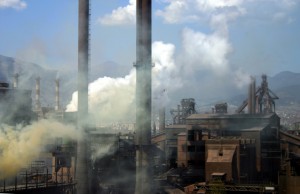At Kinexions this year we have a lineup of very interesting speakers discussing innovation and digital supply chains. On the first day, Jeff DeGraff, the Dean of Innovation, will be our keynote speaker. In his session, Connecting the Dots of Innovation, he’ll be talking about how conventional organizational strategies, structures and processes are being replaced by boundless affiliations where connecting the dots of diverse cultures and competencies has become the essential function of leadership. Stan Aronow a Vice President in Gartner's Supply Chain Research group will also be taking the stage on the first day of the conference, with his session on Supply Chain Leadership Trends. Stan will be exploring notable trends in how supply chain leaders are accelerating their capabilities ahead of the competition. Well-known supply chain expert Gary Hanifan, the Managing Director of Accenture Strategy will the keynote speaker on day two. His session, Is Your Supply Chain a Growth Engine, will discuss new supply chain strategies focused on flexibility and scalability, and how digital technologies can help enable those changes. What I like about the lineup is that so often when digital is discussed it’s about cool products like drones, and wearables, and 3D printing. Of course I find all of that cool stuff interesting. I love my Pebble watch. I don’t have to unlock my phone and navigate to the Yahoo Finance page to get an update of the Kinaxis share price. I just have to look at my watch. But I digress. What these three speakers are talking about is the operating model changes and associated process and organizational changes that digital will enable. This is where large companies can make tangible and financially worthwhile use of digital technology. Sure, the device manufacturers will make money. As will all the big data companies that troll the data lakes for insights. But these are all tinkering on the edges of the true value of digital, which are the changes in operating model. Hau Lee of Stanford University has an interesting way of describing three stages of innovation that result from the adoption of technology, and the resultant business impact:
- Substitution This phase is focused on cost. It is about replacing a more expensive device with one that is cheaper to operate. The classic example is the replacement of steam engines by electric motors at the end of the industrial revolution. The structure of the factories didn’t change at all. They still had a single large motor in a basement powering drive shafts, pulleys, and belts. A more recent example is the adoption of cloud applications as a way of reducing IT costs. For the most part all we did was put enterprise systems into the cloud.
- Scale This phase is focused on doing more (of the same) with the new technology. During the Industrial Revolution this equated to building bigger factories, without changing the design of the factories at all. The evolution of scale was really water wheels, steam engines, electric motors. Ok, so we can now load many more records into Salesforce than we could into Siebel, because Salesforce is in the cloud and will just charge us more, but still scale to our data volumes. The same is true of the Internet of Things (IOT), where we are focused on the volume of data. This is where we see Hadoop and other discussions of massive data scale. We might be analyzing stuff we couldn’t before, but we are still doing things the same way.
- Structure This phase is about doing things differently leveraging the technology. This is when I get really interested. During the Industrial Revolution this was when people who had grown up with electric motors questioned the design of factories and replaced the single large motor in the basement with many much smaller motors powering individual machines. Hau Lee says this structural change only took place 50 years after electric motors were first installed in factories. Replacing the drive shafts, pulleys, and belts led to massive improvements in health and safety, let alone efficiency and productivity. Now they could turn motors on and off as needed. Another example of structural change is Ford’s assembly line, which again led to massive increases in productivity. The key point is that it required people who had grown up with electric motors to understand how a significant structural change could be made in how they are used.
I wish I was smart enough to be able to predict how our operating models will change in the Digital Revolution. One possibility was described by a VP of Supply Chain during a meeting I attended. After we had demoed he turned to his team and said: “Realize that in two to three years after deploying RapidResponse we will no longer have demand planners, and inventory planners, and capacity planners, and material planners. We’ll just have network planners.” I’ll be listening eagerly, especially to Jeff DeGraff, for any indication of the direction we are going in. But, much like we had to wait 50 years for people who had grown up with electric motors to make fundamental changes, we are going to have to wait for the ‘digital natives’ to enter the workforce and get into positions of power before we see real change in operating models and business processes.









Leave a Reply